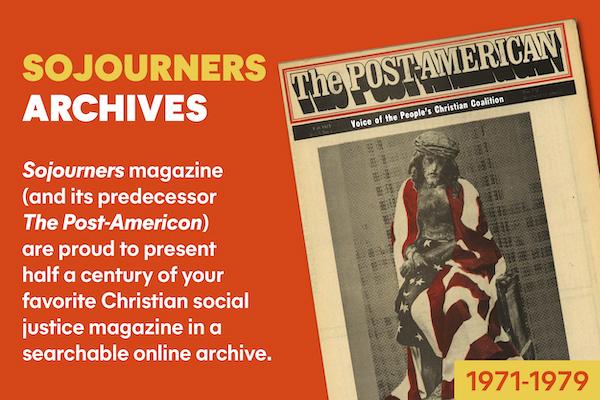This is the third of three essays on the “Christian radicalism” of early
It was under the presidency of evangelist Charles G. Finney that forces converged to force Oberlin in the direction of a more “revolutionary” stance. Oberlin’s anti-slavery convictions had pushed the colony toward identification with radical Republicanism, a political philosophy that put them at odds with the surrounding Democratic establishment. Oberlin’s work with the “Underground Railroad” and opposition to the “Fugitive Slave Law of 1850” led to the development of a doctrine of “civil disobedience” defended by appeal to the divine or “higher law.” Oberlin began to debate the propriety of using force in opposing the fugitive slave laws. All of this climaxed in the “Oberlin-Wellington Rescue Case” that gained international notoriety for the “Oberlinism” already despised in this country.
In early 1858 John Price sought refuge in Oberlin. That summer four armed slave catchers from the South came to town and paid a teenager to lure John out of town so that he could be seized and returned to the South. Fortunately some Oberlinites returning to town met the fleeing party on its way to the train in nearby
This was too flagrant a challenge to federal authority to be allowed to pass unpunished. For the local Democratic establishment, it was a chance to “get” Republican Oberlin, to strike a major blow at the “Underground Railroad” and to demonstrate willingness to enforce the unpopular “Fugitive Slave Law.”
Indictments were brought against 21 identifiable citizens of Oberlin as well as against some residents of
The District Attorney portrayed the Oberlinites as revolutionaries, characterized the “Higher Law” as “Devil’s Law” and claimed that “Higher Law people ran into the predicament of free love and infidelity.” He advised the Oberlinites to preach “the Bible and not politics.” Peck denied that “there is no patriotism where there is not an acknowledgement of the maxim ‘our country, right or wrong’.” The Oberlin defense explicitly advocated the doctrine of a divine or “Higher Law,” but rested most of its case on such issues as the questionable identification of John, the constitutionality of the “Fugitive Slave Law,” and certain legal questions.
But much discussion of the case did focus on the question of the “Higher Law.” As Peck insisted in one of his speeches, “We must obey God always, and human law, social and civil, when we can.” This “Divine Will was well expounded in the life of Christ” whose gospel was such that “those who should follow Him, should minister good to the needy; that the poor and forlorn would be blessed by it; that those ‘sick and in prison’ would be cheered by it; and that it would strike the iron from countless wretches unjustly bound.”
The Oberlin prisoners pulled off a number of astute propaganda coups. Emergency appeals to the state and federal Supreme Courts were unsuccessful but did publicize their case. Money poured into the defense fund from around the world. The prisoners used their imprisonment to create the aura of martyrdom. They even published a paper from their jail in
But political power still reigned, and it looked like the Oberlinites would be convicted until someone came up with the ploy of arresting the four “slave-catchers” and bringing them to trial in Oberlin for kidnapping. In Oberlin the judge, jury, and prosecutors would all be Republicans operating on a different interpretation of the constitutionality of the “Fugitive Slave Law.” Conviction was certain and the trial would prevent the government’s major witnesses from appearing in the
The Oberlin-Wellington Rescue Case pushed Oberlin very close to a “revolutionary” position. During the trial Oberlin students began to debate such questions as “Resolved that it is the duty of citizens of Oberlin to forcibly resist the Fugitive Slave Law, henceforth and forever” and whether the Oberlin prisoners would be released by force. One of the defense lawyers argued for “the right of revolution, the ultimate and legitimate resort of people who find their government too oppressive longer to be borne.” In this they appealed to the precedent of American origins. As one of the prisoners put it, “We belong to no ‘modern school’ of politics or theology, and lay claim to no new light on these subjects. We belong to the school of the Fathers, who having been driven from their native land by the persecutions of their government, taught their children that ‘resistance to tyrants is obedience to God’; or to the more ancient school, which exclaimed to the existing authorities, ‘Whether it be right to hearken unto you more than unto God, judge ye’; or to that still more ancient, which said to the king, ‘We will not serve thy gods nor worship the golden image which thou hast set up.’”
This teaching allowed Oberlin to sympathize with John Brown, who had been preparing for his raid on Harper’s Ferry during the Oberlin-Wellington Rescue Trial. Two Oberlin blacks, harness-maker Lewis Sheridan Leary and student John A. Copeland, died in that “revolutionary” episode. Leary was killed during the raid and Copeland was executed a few days later. Most Oberlinites clearly sympathized with Brown; the chapel bell tolled for an hour on the day of his execution. When Professor Peck addressed a memorial mass meeting, the student paper reported that “Professor Peck surpassed himself. ... His summer’s incarceration has given him a rich experience from which to draw, when about to speak for the downtrodden, or account the deeds of the martyrs of
This spirit soon found expression in defending the Northern cause during the Civil War. After the Civil War the distinctive character of Oberlin gradually evaporated. Each successive president was a little more conservative; “Oberlinism,” like most profound movements and religious concerns, could not be maintained into the second and third generation. But the first generation did leave to later generations a profound example of “Christian radicalism”—one that still deserves study and pondering today.
No doubt, as will probably always be the case, Oberlin reflected themes of broader cultural movements. Oberlin was born in an age of reform and was a child of its time. But there can be no question that Oberlin grounded its reformist impulse squarely in the Christian faith and gave it a distinctly Christian character. In the process Oberlin rediscovered and made central a number of biblical themes often obscured by more conservative and self-serving forms of Christianity. In doing so Oberlin debated a number of the issues that perennially recur in any age in which Christians rediscover the radical implications of their faith. If history has any value in illuminating our present experience, the story of
Was there anything distinctive about the Oberlin understanding of Christian faith that helped produce this period of “Christian radicalism”? This is difficult to answer, but we should perhaps note two factors. The Oberlinites, though generally Calvinist in orientation, were in fierce struggle against a form of decadent Calvinism that dominated American culture. They were a part of the “armenianizing” of American Theology. This movement away from scholastic Calvinism allowed them to give greater weight to the value of human life in this world, the possibility of human achievement in effecting social change, and the responsibility of all Christians to commit themselves to the struggle against social injustice. Classic “establishment evangelicalism” at the day was not only opposed to Oberlin’s radicalism, but also to its revivalism, its “New Divinity,” and its movement toward Wesleyanism. Among its greatest critics was the “
It should also be noticed that Oberlin was at least one place where intense personal piety contributed to social reform rather than short-circuited it, as is often assumed to be the case. Oberlin’s all-consuming desire was for the intensification of Christian experience, and it became a fountainhead of Christian “higher life” movements. The American holiness movement, the Keswick Movement of England, and even Pentecostalism were all deeply influenced by currents that spread out from Oberlin. There “social witness” and “reform” were rediscovered, at least in part, by exploring the heights and depths of “Christian experience.” No doubt there are other routes to “Christian radicalism,” but Oberlin stands as a clear witness to the fact that intense piety is one such route.
Donald W. Dayton was director of Mellander Library at North Park Theological Seminary, a graduate student in theology at University of Chicago Divinity School, and a contributing editor of the Post American when this article appeared.
For further reading:
Robert S. Fletcher, A History of
Edward H. Madden, Civil Disobedience and Moral Law in Nineteenth-Century American Philosophy (Seattle: University of Washington Press, 1968). Also available in a paperback edition.
Jacob R. Shipherd. History of the Oberlin-Wellington Rescue (Boston: J. P. Jewett. 1859). Reprinted 1972 by DaCapo Press of
Benjamin B. Warfield, Perfectionism (Philadelphia: Presbyterian and Reformed Publishing Company, 1958). This abridgement of the two-volume
For the rest of the series, see below:
Recovering a Heritage, Part I:
Recovering a Heritage, Part II: Evangelical Feminism, by Donald W. Dayton and Lucille Sider
Recovering a Heritage, Part III: The Lane Rebellion and the Founding of
Recovering a Heritage, Part IV: The "Christian Radicalism" of
Recovering a Heritage, Part V: The Rescue Case, by Donald W. Dayton. December 1974.
Recovering a Heritage, Part VI:
Recovering a Heritage, Part VII: The Sermons of Luther Lee, by Donald Dayton. February 1975.
Recovering a Heritage, Part VIII: Theodore Weld, evangelical reformer, by Donald W. Dayton. March 1975.
Recovering a Heritage, Part IX: The Tappan Brothers: businessmen and reform, by Donald Dayton. April 1975.
Recovering a Heritage, Part X, by Donald Dayton. May 1975.

Got something to say about what you're reading? We value your feedback!
